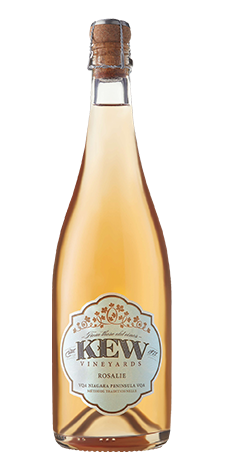If you’ve ever wondered how they get the bubbles in your bottle of sparkling wine, here’s the answer: The Foundation of Fizz: A Guide

Raise your glasses wine enthusiasts, because today we're diving into the effervescent world of sparkling wine. It's a tale that dates back centuries to a time when bubbly was once reserved for royalty and the elite. The origins can be traced to the Champagne region of France in the 17th century. Initially, it was a happy accident, as winemakers struggled with secondary fermentation in the bottle. Fast forward to today, and sparkling wine has become synonymous with celebrations worldwide. In Canada, the cool climate regions of Ontario, British Columbia and Nova Scotia are ideal destinations for producing crisp and complex sparkling wines that rival their European counterparts.
Traditional Method: A Symphony of Bubbles
When it comes to crafting sparkling wine, the traditional method is the gold standard. This process, also known as the “méthode Champenoise” or “méthode classique,” involves fermenting the wine completely in the bottle. The grape juice is fermented to a dry wine and then the a “tirage” of yeast and sugar is added to that base wine (called cuvée) and then bottled to start a second fermentation. The wine is aged on their lees (autolytic yeast particles) for a period of time to develop texture, and is then clarified by storing the bottle upside down so all of that dead yeast settles in the neck of the bottle (riddling). The bottles are then popped into freezing liquid to freeze that sediment so it can be easily removed in a process called disgorging. Bottles are finally topped up with a shot of wine and sugar (dosage) and corked again.
Transfer Method: Precision in a Glass
With the transfer method, the wine undergoes secondary fermentation in the bottle, just like the traditional method, however, it's then transferred into tanks before being sent through pressurized filters to remove the lees and rebottled. The result: This method preserves the wine's elegance and flavours, offering a balance of fruit notes and a creamy mouthfeel.
Ancestral Method: A Taste of Tradition
The ancestral method (méthode ancestrale) is an approach predating the traditional method where fermentation is stopped by chilling and filtration, and once the wine is in the bottle, it completes the process with the CO2 trapped inside. When the ideal CO2 level is achieved, the bottle is chilled, riddled and disgorged in the same way as the traditional method. In this case, no dosage is added. If you’ve heard of “Pet-Nat” for “pétillant naturel,” you’ll know that this method and resulting wine has become newly trendy with natural-wine fans. This process produces a beautifully cloudy, unfiltered wine with a natural sweetness.
Tank or Charmat Method: Old World Meets New
In this sparkling wine production, a sugar and yeast mixture (tirage) are combined and added to a base wine which has already been fermented to dryness. The liquid is then placed in a large tank to undergo second fermentation. As this happens, pressure builds up in the tank, thereby adding those desired bubbles. The wine is then filtered, a dosage added and the wine is bottled. Style-wise, tank method wines are fresh with yeasty secondary flavours such as toast, biscuit and brioche.
Simple Carbonation Method: The Effortless Bubbles
Last but not least, we have the simple carbonation method, where wine’s effervescence is introduced artificially. Expect easy-drinking and typically more value-positioned sparkling wines here with crisp, refreshing bubbles and a focus on fruit-forward flavours like apple and pear.
A Toast to Diversity in the World of Sparkling Wine
Each sparkling wine production method adds its unique touch to the overall final experience in the glass. Whether you're celebrating the holidays or simply sipping for the sheer pleasure of it, there's a sparkling wine for every moment. So, go head and pop the cork to enjoy the delightful journey that is sparkling wine!




